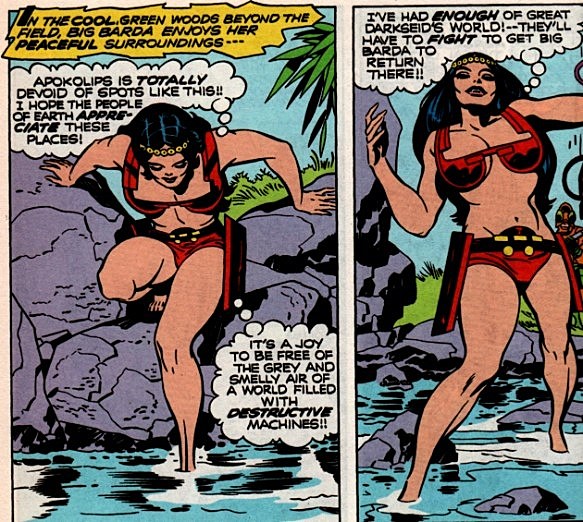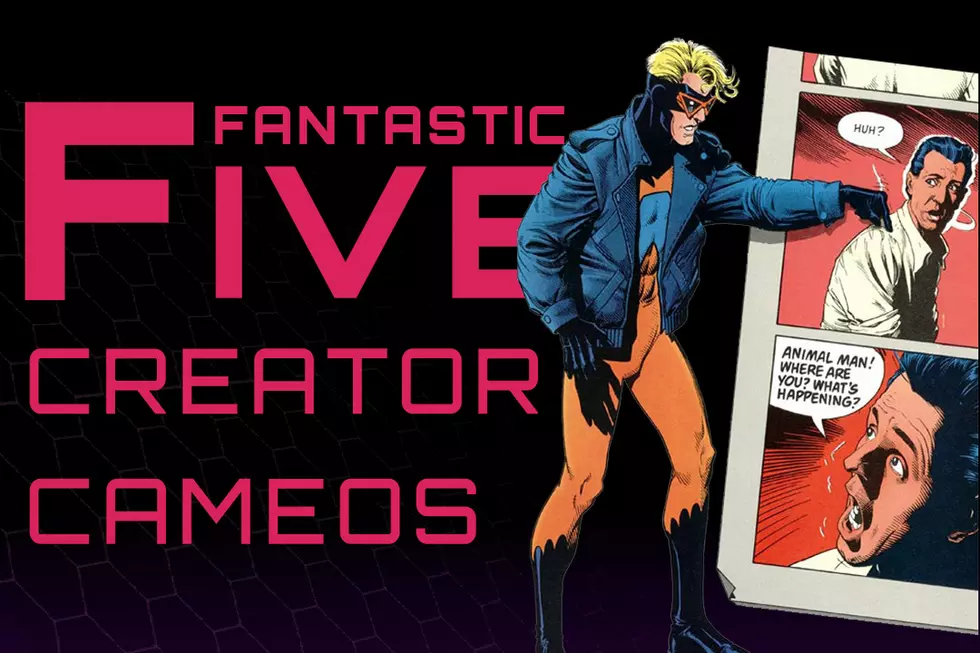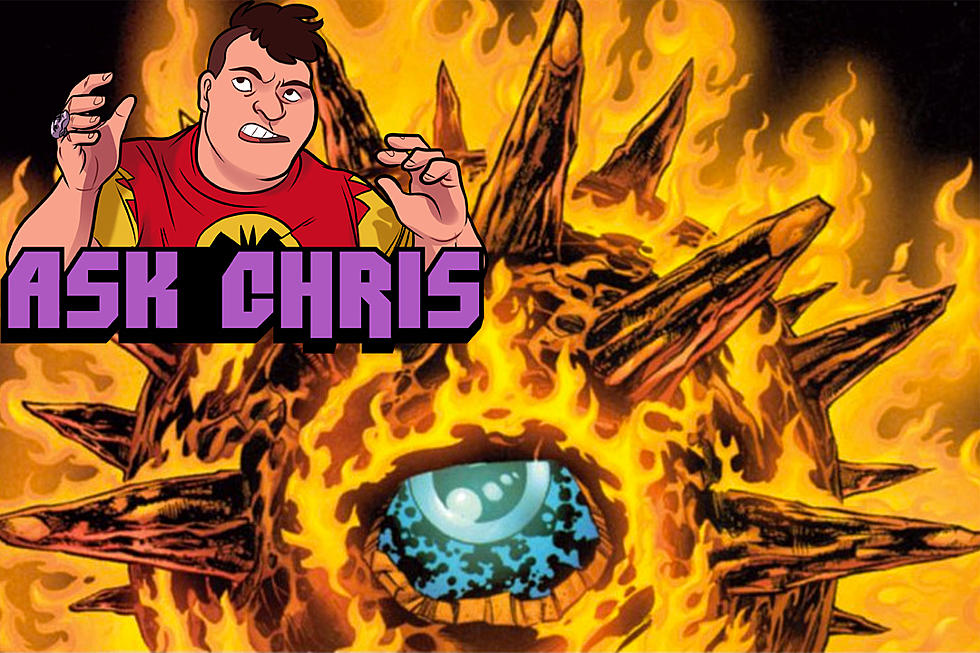![Jack Kirby’s Erotic Flirtations: The Sensual Side of the King of Comics [Sex]](http://townsquare.media/site/622/files/2012/02/galaxy-green-color-1330031494.jpg?w=980&q=75)
Jack Kirby’s Erotic Flirtations: The Sensual Side of the King of Comics [Sex]

When legendary artist Jack Kirby left Marvel Comics in 1970 and went to DC, he was lured there in part by the promise of doing work in new genres and new formats. He always envisioned comics going further than the pamphlet; he wanted to see glossy magazines and long-form books with enough variety to appeal to everyone. Most of his proposals fizzled out before he had the chance to put pen to paper, but one that he at least got started on was the stupendously titled Uncle Carmine's Fat City Comix (named after Carmine Infantino, DC's then-publisher).
Fat City was intended to be a tabloid-sized magazine filled with underground-style comix by various artists. For the proposal, Kirby took the opportunity to experiment with a genre that was catching on and that he had little affinity for: erotic comics. He drew two pages of a new strip he called Galaxy Green, about a space-faring group of superwomen who roamed the galaxy looking for men to mate with. The result was fairly tame, very strange, and utterly Kirby.
99 percent of all superhero comics ever made speak with Kirby's visual vocabulary. When his compositions and characters aren't being aped directly, they're being regurgitated either as expert internalization of technique or unconscious fourth-generation copies-of-copies-of-copies. In the great teeth-gnashing debates over sexiness in comics, the argument is often made that super-hero comics are sexual in nature because their art depends on idealization and stylization. When it comes to style in mainstream comics, Jack Kirby is The Source, but despite founding the modern style, creating super-heroines such as The Invisible Woman and The Wasp, and even co-inventing the romance comic, Kirby isn't well known for getting sexy with his art.
For the most part, Kirby wasn't the most comfortable creating overly sexualized content. He turned down offers to work on art for Playboy magazine, and there's a story that he once changed a female character's bikini into a one-suit because some fans who had seen the art pre-publication had gotten too excited. But Kirby was still Kirby, a man who processed all stimulus through his churning creative engine, and there were moments in his body of work when the erotic drifted to the foreground.


In the Galaxy Green art, you can feel Kirby's discomfort with shoehorning sex into the rhythms of his action. In one panel, you can see Kirby predict the now-common practice of tilting compositional angles and contorting female figures to show the maximum amount of boobs, butt, and crotch possible. It's worth noting that, while Kirby tried this technique in literally one panel and then tossed it out as too awkward, there are artists today who draw almost nothing but panels like this one:

 Kirby abandoned overt eroticism after that two-page experiment, but his other work was not devoid of sex. In the early '70s, like all of visual media, comics got looser and bolder with its depiction of women, and Kirby's work was not immune. One of his most-loved and well-crafted characters from that period is Big Barda from the New Gods cycle. A warrior woman from Darkseid's evil army who switches sides and fights for right, Barda's strong-willed and fiercely protective personality was based mostly on Roz Kirby, Jack's wife. But visually, Barda was inspired directly by a series of photos of singer Lainie Kazan that Kirby had seen in Playboy.
Kirby abandoned overt eroticism after that two-page experiment, but his other work was not devoid of sex. In the early '70s, like all of visual media, comics got looser and bolder with its depiction of women, and Kirby's work was not immune. One of his most-loved and well-crafted characters from that period is Big Barda from the New Gods cycle. A warrior woman from Darkseid's evil army who switches sides and fights for right, Barda's strong-willed and fiercely protective personality was based mostly on Roz Kirby, Jack's wife. But visually, Barda was inspired directly by a series of photos of singer Lainie Kazan that Kirby had seen in Playboy.
Kazan was a fit woman with a larger physique, and Kirby liked the notion of creating a female super-hero with that kind of build, or as Mark Evanier puts it, "a super-heroine who looked like she could do the feats of strength that Wonder Woman or Supergirl did with more dainty physiques."

In Kirby's drawings of Barda, you can see him taking pleasure in exploring the female form more explicitly than in his past works. I suspect one of the reasons he was able to do so without the discomfort of something like Galaxy Green was because, to Kirby, Barda was as full and important as any of his characters -- maybe even more so, given her close ties to Roz. To Kirby, Barda was a strong woman who was also sexy, as opposed to a sex object for which he had to devise some plausible characteristics or storyline.
Kirby's art wasn't known for its sex appeal, but it's fascinating to look at the small elements of eroticism that show up in the work of the man who defined super-hero art, especially since the super-hero art of today is filled to the brim with sex. It's additionally interesting to note that, while Kirby decked Barda out in a two-piece for lounging around, her outfit becomes all business as soon as she needs to throw down. One more lesson we might learn from the King.

More From ComicsAlliance




![Super7 ReAnimates Alien and Predator, Masters More of the Universe [Toy Fair 2017]](http://townsquare.media/site/622/files/2017/02/IMG_2000.jpg?w=980&q=75)

![The Wild, Tear-Filled World of Heartbreak: The Best Romance Comic Covers Ever [Love & Sex Week]](http://townsquare.media/site/622/files/2017/02/featured1.png?w=980&q=75)


